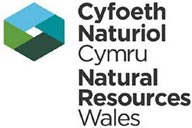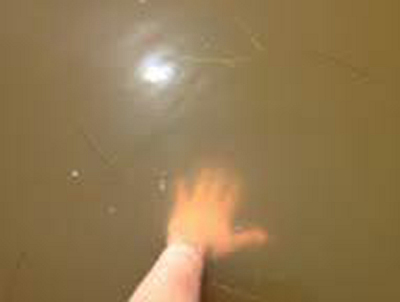RIVER WYE REPORT FEBRUARY 2016
Well since my last report the weather relented not one jot and as I write this in mid February yet another big dirty spate is funnelling down the Wye as another winter storm sweeps across the country. There is still no way of knowing what effect the winter’s rain has had on the rivers ecology and this will have to wait until when and if levels do eventually settle as indeed at some stage they surely must. There may well be a few surprises in store.
What conditions we may find on opening day on the third March is still of course in the lap of the gods as even 24 hours is at times too short a period to determine exactly what conditions may pertain on the Wye on opening day or indeed any other. I have heard of one kelt being seen on one of the lower beats but they are conspicuous by their absence at the moment, dead or alive though no doubt the odd one will still be around when conditions allow any serious fishing.
NRW’s initial ‘consultation’ is now over and we must wait and see what the next step will be for Welsh rivers. The trend seems to be to continually want to restrict the times and methods and tackle anglers may fish with yet in the same breath insist “We don’t consider anglers are the problem”. It’s easy enough for well heeled fly fishermen on good beats to want to ban everything in sight but what about the anglers on lesser beats with mainly bait fishing water available to them or those unable to wade or be robust enough to roam the often difficult banks. Those who like, or are only able, to fish the worm or shrimp should not be denied some sport somewhere on the river. No trebles, possibly only singles, barbless at that, are all being mooted as the way to go just so someone can be said to be seen or suggesting doing the ‘right’ thing. No doubt many anglers will be lost to the river but as long as some are fortunate to be on the more productive beats why bother about the less fortunate. Continued river management/improvements seems to be the only thing on offer from NRW, presumably by River Trusts at no cost to them.
At a recent conference in Dublin Dr Stephen Marsh Smith Director of the Wye and Usk Foundation said this to the assembled delegates;
“The work carried out by the Wye and Usk foundation has led to a dramatic increase in fish numbers and distribution throughout the river and its tributaries. Roughly 80% of the system is now considered to be in good condition for salmon, up from only 12% in 1996.”
Were this even true how is it that according to him only 12% 0f spawning habitat that was available produced a rod catch of around 1700 fish and yet, nearly twenty years later and the spend running into may millions of pounds how is it that the now claimed 80% or so of good habitat is still only able to produce a rod catch of around 1150/1200 . 500 or so less than when they first started. Surveys have shown salmon fry/parr populations are still very patchy and the opening of the Osbaston weir on the Monnow has so far shown very little sign of producing any significant improvement in smolt production for the Wye. In fact so far none at all as far as I can determine. In fact only a small number of fish assumed to be salmon have been counted over the weir.
He also said;
“hatcheries are used to treat the symptom of declining salmon stocks rather than underlying problems. As a result of their reliance on hatcheries, many fisheries neglect to engage with the sort of rejuvenation work that has been carried out on the Wye in recent years. Barriers to wild salmon production are allowed to persist and disproportionately expensive hatcheries become permanent features of the fisheries. Dr Marsh-Smith emphasized the importance of the active involvement of river trusts and fishery stakeholders in river rehabilitation initiatives.”
I’m not aware of many UK rivers that ‘rely’ on hatcheries but merely use them as a means of trying to increase returning adults, which many do successfully. Just another management ‘tool’ in the box as it were. I suspect two of the major Scottish rivers, the Dee and the Tweed wish they had a stock of fish in reserve in their now mothballed hatcheries especially after this winters huge floods have wreaked havoc amongst last season’s spawning stock on the redds.
So we await the opening day, which will be some way behind us when you read this with a mixture of hope and trepidation. Will there be another dip in catches or will the river maintain its 1000 or so fish for another season of indeed move to greater heights. Only time will tell and no doubt many of the factors that determine the final outcome will reveal themselvesas the season progresses.
Don’t forget to look out for 2 and 3 sea winter fin clipped fish due back from the now sunk by the powers that be, SNR stocking programme, and report them to RWGA, WSA or the NRW. With a photograph if possible.
Geoff Franks.



